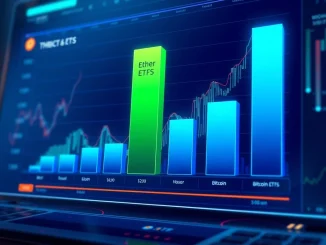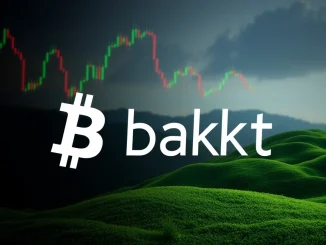
In a surprising turn of events, the U.S. state of Montana has become the latest battleground in the ongoing debate over cryptocurrency adoption. Lawmakers in the Montana House of Representatives have decisively rejected House Bill No. 429, a proposal that aimed to establish a state-level Bitcoin reserve. This move has sent ripples through the crypto community, raising questions about the future of digital asset integration into traditional financial systems.
Why Did Montana Reject the Bitcoin Reserve Bill?
According to reports from Cointelegraph, House Bill No. 429 faced a significant hurdle in the Montana House, ultimately failing with a 41-59 vote. The opposition primarily came from Republican lawmakers, who voiced concerns about the bill’s implications. The core of the proposal was to create a dedicated revenue account designed for strategic investments in a range of assets. These included precious metals, stablecoins, and crucially, digital assets. The bill specified a market capitalization criterion for digital assets, requiring them to consistently maintain a market cap above $750 billion. Currently, only Bitcoin meets this stringent requirement, making it the primary, if not sole, target of this investment strategy.
Here’s a breakdown of the key aspects of the rejected bill:
- Objective: To establish a state-level revenue account for investments in diverse assets.
- Asset Focus: Precious metals, stablecoins, and digital assets (primarily Bitcoin).
- Bitcoin’s Role: The bill effectively targeted Bitcoin due to its market capitalization dominance.
- Opposition: Primarily from Republican lawmakers in the Montana House.
- Outcome: Bill defeated with a 41-59 vote, halting the Bitcoin reserve proposal.
Understanding the Implications of Cryptocurrency Regulation in Montana
Montana’s decision to reject the Bitcoin reserve bill highlights the complex landscape of cryptocurrency regulation in the United States. While some states are actively exploring and embracing digital assets, others remain hesitant, often citing concerns about volatility, security, and the nascent nature of the technology. This vote in Montana underscores the significant political and ideological divides surrounding crypto adoption at the state level.
The defeat of House Bill No. 429 has several key implications:
- Setback for Bitcoin Adoption: This is undoubtedly a setback for proponents of Bitcoin adoption within state governance.
- Future Legislation Needed: Any future attempt to establish a Bitcoin reserve in Montana will require entirely new legislation to be drafted and proposed.
- Broader Regulatory Uncertainty: The vote reflects the broader uncertainty and varying approaches to cryptocurrency regulation across different U.S. states.
- Political Divide: The primarily Republican opposition suggests a potential partisan element in the debate over digital asset reserves.
What Does This Mean for Bitcoin and Digital Assets?
While Montana’s rejection is a localized event, it contributes to the larger narrative surrounding Bitcoin and digital assets in the United States. It serves as a reminder that the path to mainstream adoption is not always linear and faces political and regulatory hurdles. For the Bitcoin community, this decision underscores the importance of continued education and advocacy to address concerns and build support among lawmakers.
Despite this setback, it’s crucial to consider the broader context:
- Growing Global Adoption: Globally, Bitcoin adoption continues to grow, with countries and corporations increasingly recognizing its potential.
- Innovation Continues: The cryptocurrency space is rapidly evolving, with ongoing innovation in technology and financial applications.
- Long-Term Perspective: Regulatory landscapes are constantly shifting. While Montana rejected this bill, future legislative sessions could bring renewed proposals and different outcomes.
Navigating the Complexities of Bitcoin and Cryptocurrency Regulation
The Montana situation exemplifies the challenges in navigating the complexities of Bitcoin and broader cryptocurrency regulation. For policymakers, understanding the nuances of digital assets, their potential benefits, and associated risks is paramount. For the crypto industry, proactive engagement with regulators and addressing legitimate concerns are essential steps toward fostering a more favorable regulatory environment.
Key considerations for navigating this landscape include:
| Stakeholder | Considerations |
|---|---|
| Policymakers | Thorough research on digital assets, balanced risk assessment, understanding potential economic benefits, engaging with industry experts. |
| Crypto Industry | Proactive communication with regulators, addressing security and volatility concerns, promoting responsible innovation, demonstrating real-world use cases. |
| Public | Continued education on digital assets, critical evaluation of information, understanding both potential rewards and risks, engaging in informed discussions. |
Conclusion: Montana’s Vote and the Future of Bitcoin Reserves
Montana’s shocking rejection of the Bitcoin reserve bill is a notable event in the ongoing saga of cryptocurrency regulation in the United States. While it represents a temporary setback for Bitcoin adoption in this particular state, it also serves as a valuable lesson. The journey toward mainstream integration of digital assets will likely be marked by both progress and pushback. However, the underlying trends of technological innovation and increasing global interest in cryptocurrencies suggest that the conversation around Bitcoin reserves and digital assets is far from over. The future will depend on continued dialogue, education, and a willingness from all stakeholders to engage constructively in shaping a regulatory framework that fosters innovation while mitigating risks.



